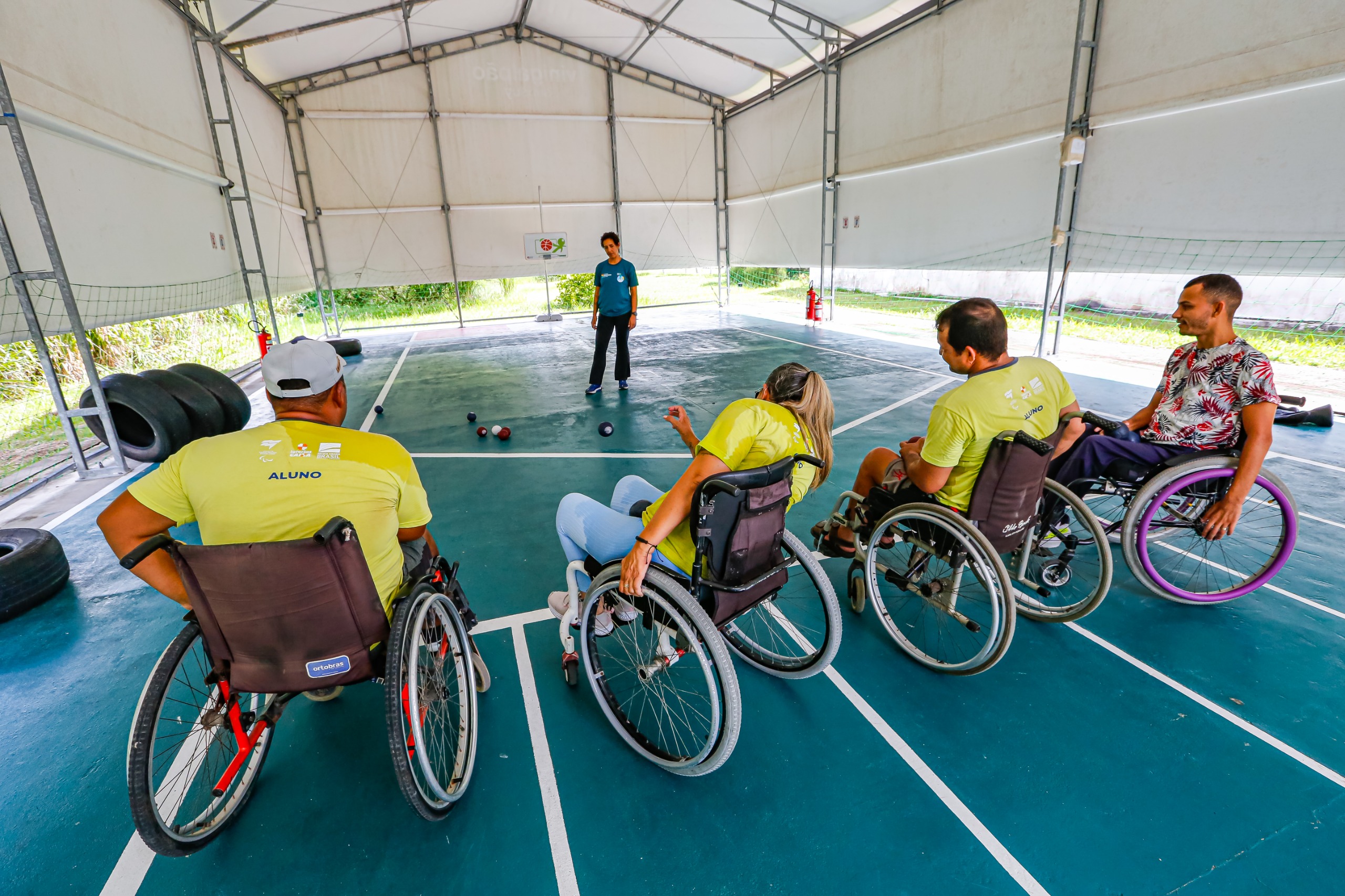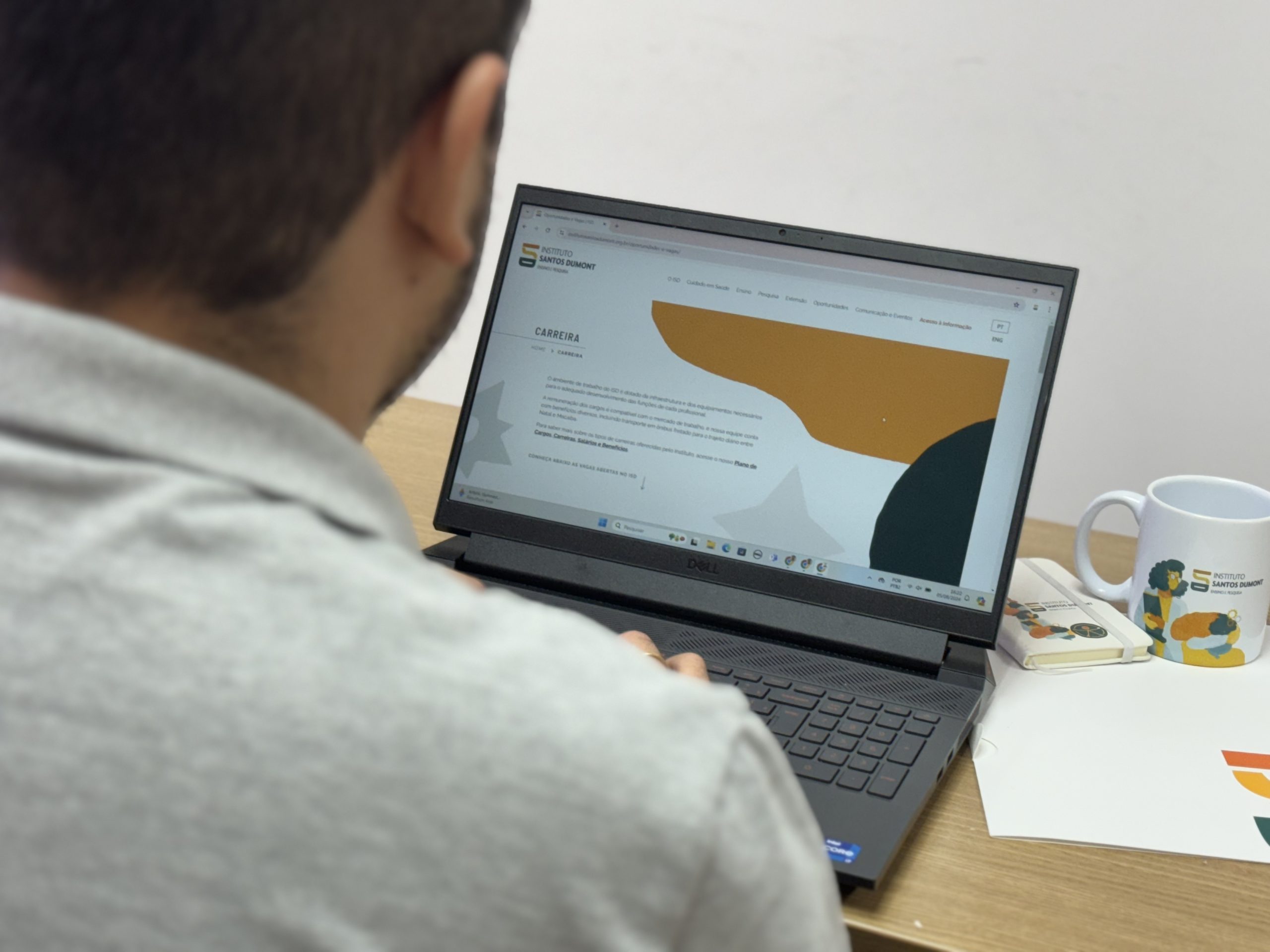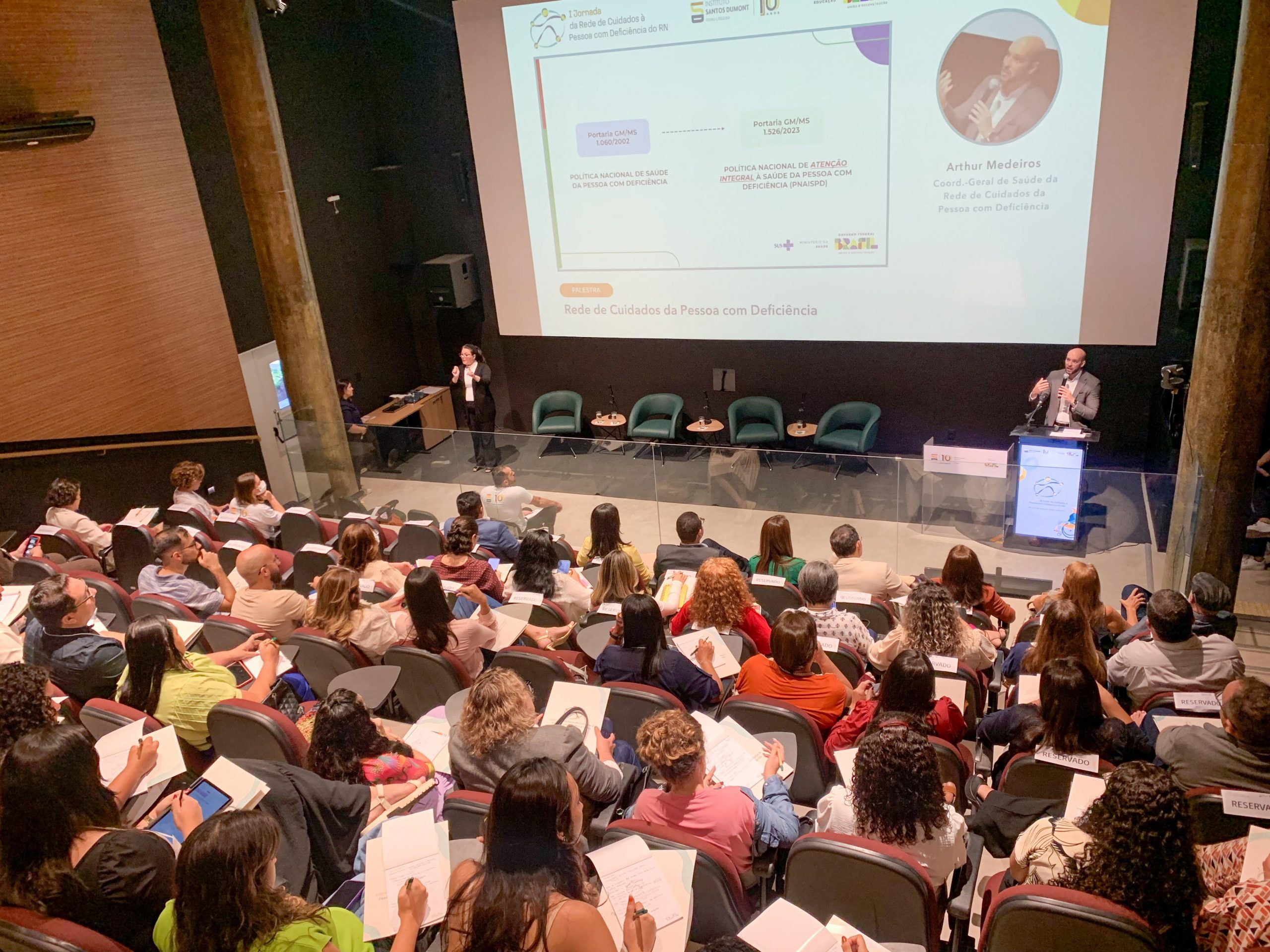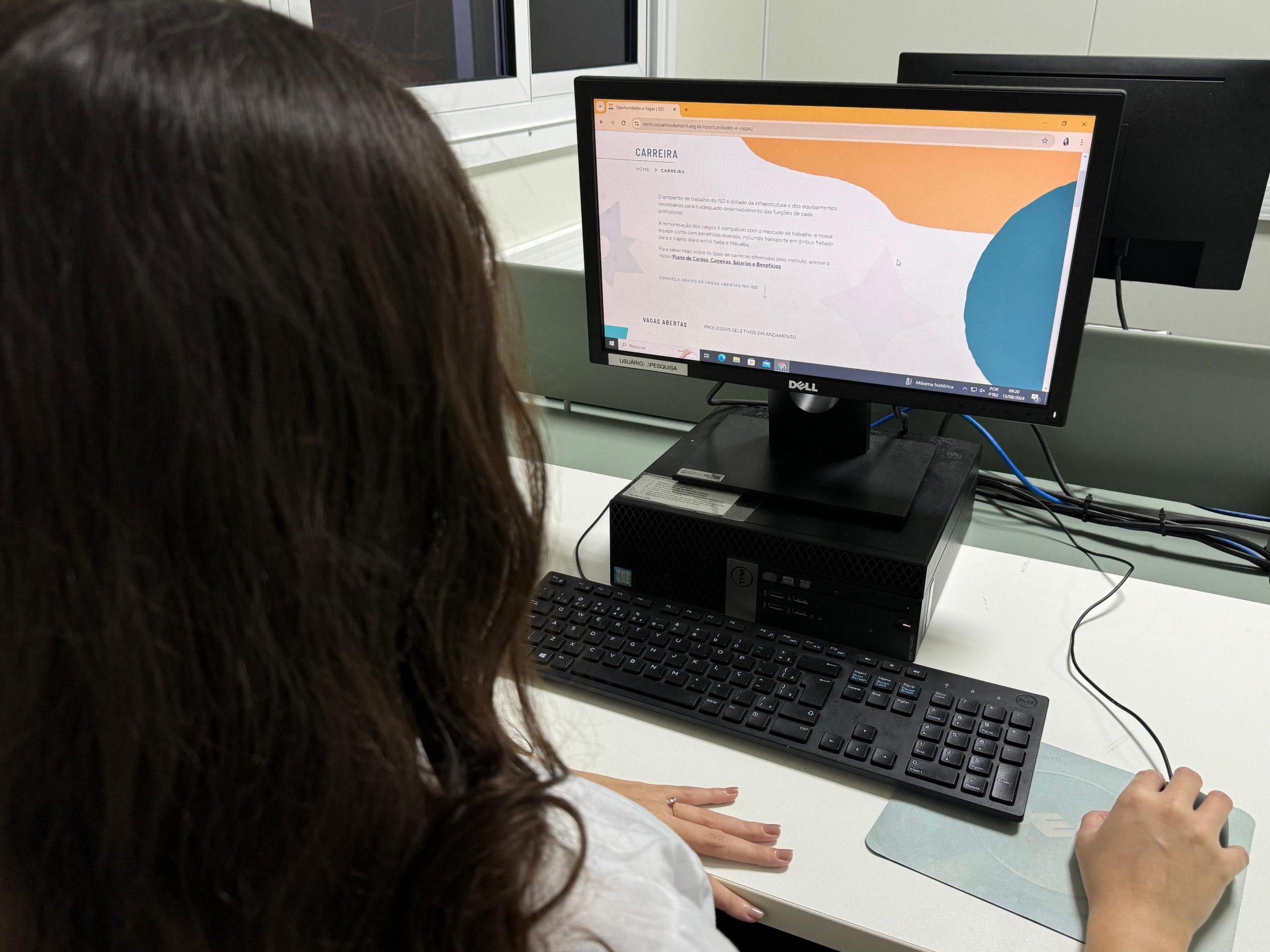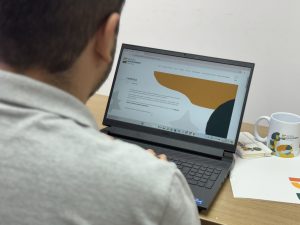Changes in communication ability. Difficulty in social interaction and repetitive behaviors. These are just some of the signs that children and adolescents may present when they are inside the Autism Spectrum.
The neuropsychologist Samantha Maranhão and neuropediatrician Celina Reis, from the Center for Health Education and Research Anita Garibaldi, from the Santos Dumont Institute (ISD), addressed the subject this Tuesday (27/10), in an interview with the program Noite 94, on Rádio Cidade (94 FM). Click here to watch in full.
Although there is no cure, experts warn that the sooner Autism Spectrum Disorder (ASD) is diagnosed, the better. They explain that appropriately treated children can develop fundamental skills for rehabilitation.
Celina Reis pointed to early diagnosis as a factor that helps to better include children with ASD and assist in their development. “Nowadays there is the possibility of diagnosis being made early, and with this it is possible to expand inclusion based on the therapies that are instituted, based on the family’s understanding of what that child feels and inclusion in school and society ", he said.
In the interview, Samantha Maranhão also commented that ASD is a neurological development disorder that usually develops in the first years of a person's life. The sooner the diagnosis is made and treatment is started, the better the chances of the condition progressing.
The Anita Garibaldi Health Education and Research Center (Anita), at ISD, has the Multidisciplinary Autism Spectrum Care Service (SEMEA), a reference in the care of Autism Spectrum Disorder (ASD) in Macaíba, which serves children from municipalities in the 7th health region of Rio Grande do Norte (Natal, São Gonçalo do Amarante, Macaíba, Ceará-Mirim, Extremoz and Macau).
Check out the questions asked during the interview and the experts’ answers below:
INTERVIEW
I would like you to explain the types of Autism (Karina Medeiros – listener):
Celina Reis: Autism, in fact, we call it Autism Spectrum Disorder because the clinical presentation of autism is very varied, so it ranges from mild cases, of people who are verbal, who speak and can communicate, to very serious cases of people non-verbal, with behavioral syndromes even associated with intellectual disability. We don't separate them into types, but we say that everyone diagnosed is on the Autism Spectrum. This way we can grade them according to the need for support, so it could be a milder, moderate or more severe impairment.
Can autism be reversible? and what are the treatments? (Mateus Almeida – listener)
Samantha Maranhão: Autism is a neurodevelopmental disorder, it is a very noticeable change in behavior, already observed in babies. The diagnosis is confirmed and qualified around the age of two, but as it is a change in which the child is born with qualitatively different living conditions, it is already possible to identify it.
There are some professionals who say that the child is out of autism, but what we observe is that the diagnosis is difficult to confirm, because it is a diagnosis based on behavioral observation. We work to carry out specific tests to exclude the possibility of genetic syndromes, epilepsy, for example, to exclude other possibilities so that we can be sure of the diagnosis of autism, which is purely behavioral. What happens (in cases where they say that autism has been reversed) is that either the child's condition is very mild, with characteristics that remain imperceptible in adult life, (when) he continues to have difficulties but is able to have autonomy, is able to have a cool social insertion, or else the diagnosis was made wrong, as it was very difficult. In our conception of work, there is no possibility of reversal, what exists is the difficulty of diagnosis which we understand is difficult or because it is a clinical condition that is closed but is very mild.
Is there a minimum age for diagnosing autism? (Giselita Barbosa – listener)
Celina Reis: The sign of ASD, the warning signs, are already present in the 1st year of life, so a baby can signal that they are experiencing some disturbance, some change in the natural evolution of their development. A baby who in his first year of life is not clapping his hands, is not learning to say goodbye, who is more socially alienated, who has little eye contact, who has a lot of difficulty adapting in the first year of life, these symptoms are warning signs of something that is impacting the child's development. When the child turns one, one and a half years old, they already have the need to socialize, it is at that moment that attention begins to be drawn to socialization difficulties and different behaviors, different interests, playing in different ways begin to appear, Play more alone, lining up or stacking. These are signs that appear and that we should suspect in the first year and consolidate in the second year. When the diagnosis is made up to two and a half years old, it is at the right time, but it can be made at any age.
Is it true that one of the predominant characteristics is irregular sleep? (Giselita Barbosa – listener)
Celina Reis: In the first year of life, some children have great difficulty adapting to sleep, sometimes they have restless sleep, older children have difficulty falling asleep, take a long time to fall asleep or have more restless and restless sleep. This is varied, but it's true, it happens.
How should we include autistic people since they prefer to be more “in themselves”? Juninho Cabral – program presenter)
Samantha Maranhão: It's about finding balance, because at the same time we need to respect this child, this space, at the same time, as we live in a society that values interaction, we need to teach this child that the world is permeated by interaction and that she also needs to interact, learn to communicate with the society in which she is involved.
What about this transition from childhood to adolescence and adulthood? How can the family help in the transition between these phases? (Juninho Cabral – program presenter)
Samantha Maranhão: They are people with autism, they are not limited to autism, they are people in development, so the guidance we always give to families is to understand that often a behavioral complaint can be the result of age, which any other developing person can to spend. For example, from childhood to adolescence, puberty was emerging, naturally the body is changing due to hormonal issues, so the demands are often not from autism, but from puberty.
Entering adulthood comes with anxiety about entering the job market, in the same way that we need to provide professional guidance for anyone, people with autism also need support, guidance focused on the job market. work and your reality.
So, it is important to understand that autism brings a different developmental condition that will have repercussions on adulthood and aging, but not forgetting that they are people and that demands are often part of this process of physiological and behavioral development.
Denial of not looking for a specialist and making a diagnosis is very common. (Karina Marinho – listener)
Yes, it is very common, what happens is that when a family has a small child they idealize a future, they place very important life expectations on that child, and when the family starts to observe and compare with their brother, cousin, neighbor , colleagues and begins to realize that the child is different from the group, suffering comes. This expectation begins to change, there is still a very negative relationship with autism, when we talk about autism we think a lot about a negative future, and this brings great suffering. It's looking at your child and thinking that he will have a bad future if the diagnosis is confirmed. So this denial is quite common.
Text: Kamila Tuenia – *journalism intern / Ascom – ISD (*Under supervision of journalist Renata Moura)
Video: Reproduction of the 94 FM channel on YouTube,
Communication Office
comunicacao@isd.org.br
(84) 99416-1880
Santos Dumont Institute (ISD)
It is a Social Organization linked to the Ministry of Education (MEC) and includes the Edmond and Lily Safra International Institute of Neurosciences and the Anita Garibaldi Health Education and Research Center, both in Macaíba. ISD's mission is to promote education for life, forming citizens through integrated teaching, research and extension actions, in addition to contributing to a fairer and more humane transformation of Brazilian social reality.




